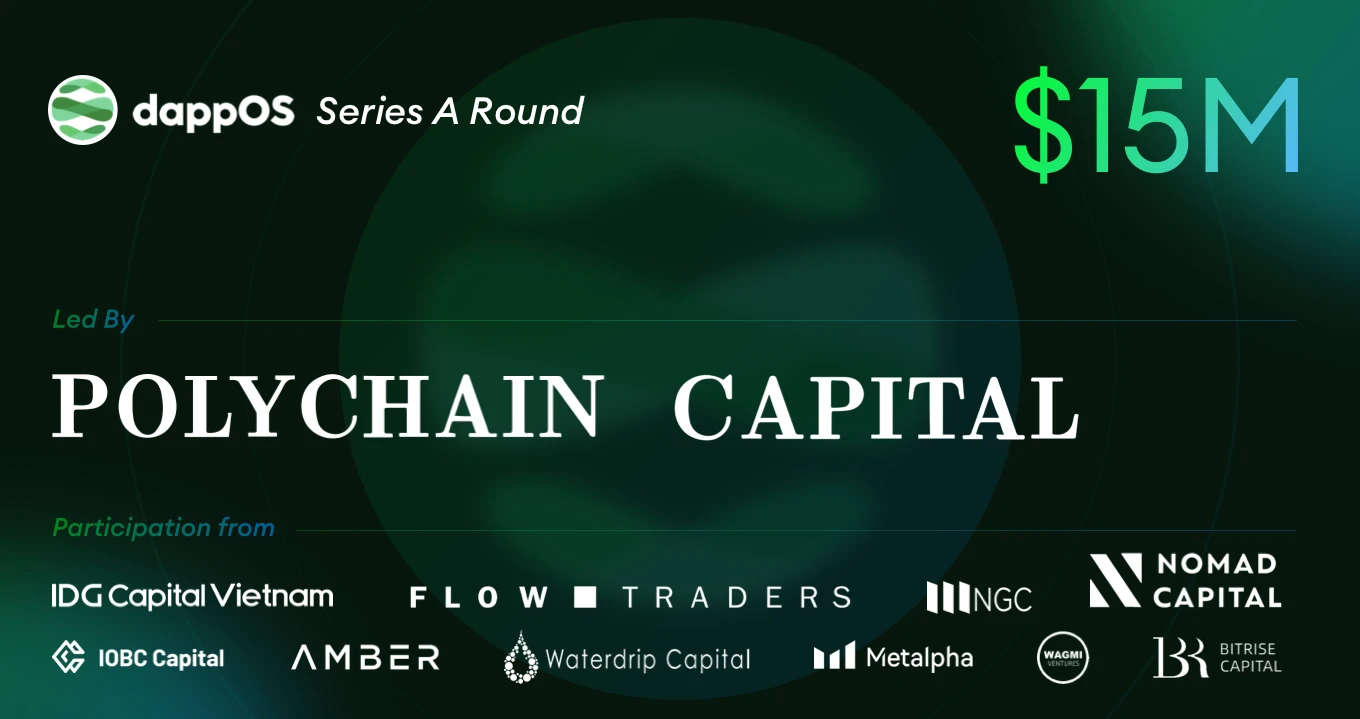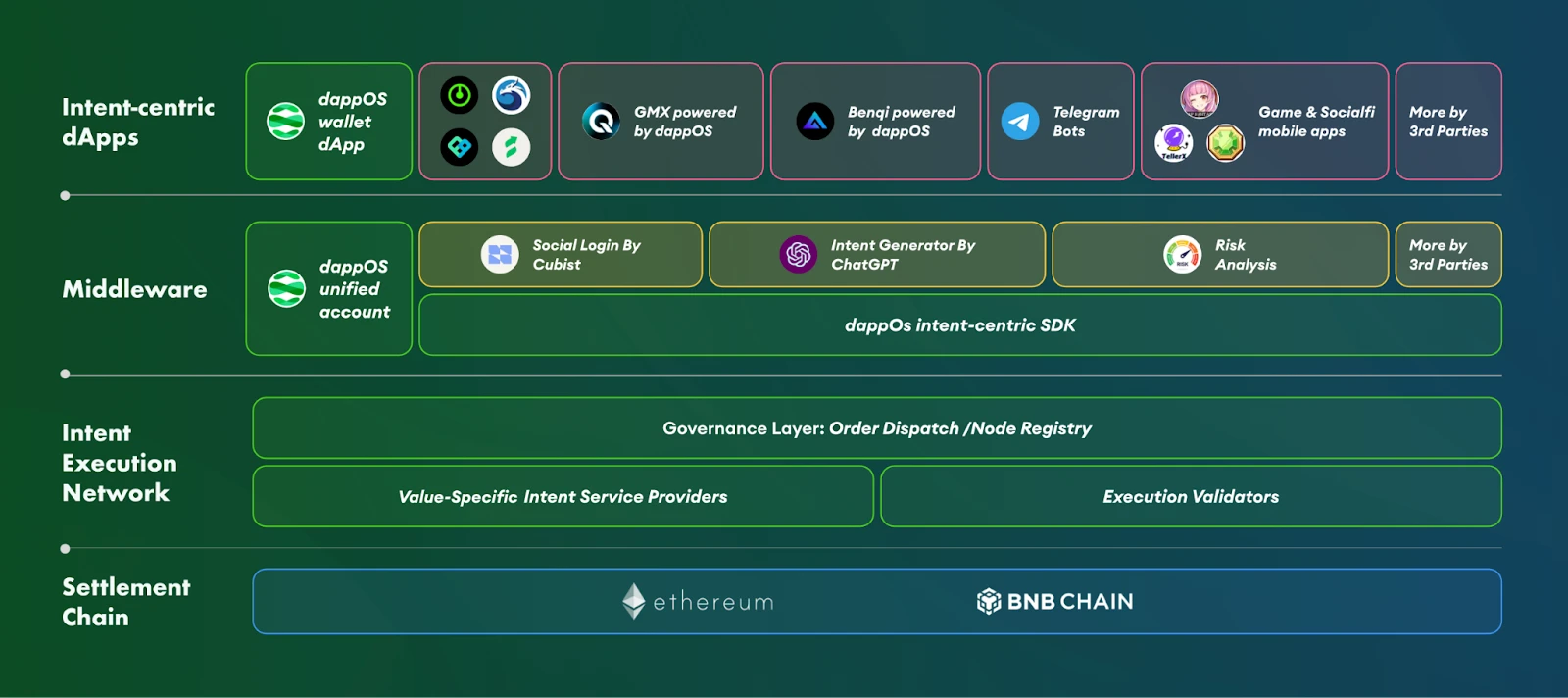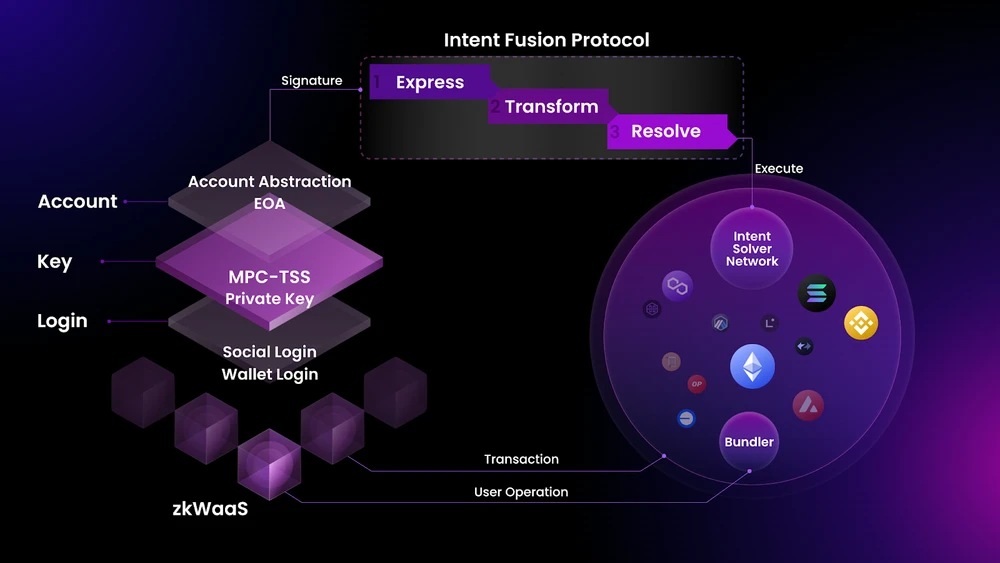With the approval of the US Bitcoin spot ETF and the development of the RWA protocol in the DeFi field, cryptocurrency is accelerating to the forefront. More and more users are participating in on-chain DeFi, trying to find new revenue opportunities. However, the cumbersome on-chain operation steps are discouraging some Web3 newcomers.
The Web3 world already has thousands of cryptocurrencies, plus countless Layer 1, Layer 2 and now Layer-3, as well as cross-chain bridges connecting different blockchains. In this vast and innovative ecosystem, new users It becomes increasingly difficult to intuitively discover which avenue is their best option for trading.
The Intent-Centric track aims to solve this problem for new users, thereby realizing Crypto Mass Adoption, allowing a wider user group of Web2 to enjoy a smooth user experience and easily leapfrog into Web3.
What is intention?
In the Web3 world, intent refers to the specific goal that the user hopes to achieve in the blockchain ecosystem, and is the expression of the final state of this specific goal. Generally speaking, transactions specify how an operation should be performed, while intent refers to what the expected results of the operation should be.
So what new can intent protocols bring to the table? In short, let users simply state their goals and leave the how to those more expert problem solvers.
For example, if you want to get from point A to point E (goal/intention), current old vision trading requires you to complete it step by step from A->B->C->D->E. This is just the tip of the iceberg in the current DeFi world, not to mention the need to transfer Tokens from CEX to the chain. In fact, the complexity of the interaction may be far beyond imagination.
However, in the case of intention protocol, after you propose the intention I want to go from A to E, each step of A->B->C->D->E is executed by the solver (Solver). The solver here can be a human, AI, or other protocol.
If a transaction is Go to A first, then go to B, and pay a certain amount of C to exchange for E, the intention is I want X, and I am willing to pay a certain amount of C. Users submit their intentions to the protocol, which then delegates each step of the task to the solver for execution.
With the intent protocol and solver, in addition to abstracting the cumbersome transaction process for new users, it can also save Gas costs to a certain extent, and the solver can execute transactions at the most powerful price, improving efficiency. As blockchain technology becomes more and more important, such a paradigm will change the landscape, making Web3 interactions more efficient and secure, and making it easier to attract the experience of billions of Web2 users.
The hot development of the intention track kicked off with Paradigms article Intention Structure and Its Risks in June 2023. To this day, what are the popular projects worthy of attention?
List of recent popular intent networks/protocols
dappOS
Intent execution network dappOS is trending on Twitter due to its $300 million valuation Series A funding and integration project GMX’s large $100,000 $ARB airdrop to active users.
dappOS recently completed a $15 million Series A round of financing led by Polychain, with a valuation reaching $300 million, making it one of the new “star projects” on the intention track. Last year, the network also received investment from top VCs such as Binance Labs, Sequoia China, and IDG.

In addition, in the two months since GMX V2 integrated dappOS, new users have increased by 30,596, and 15% of the new TVL in the past 30 days came from dappOS users. In order to incentivize active dappOS users, GMX airdropped 100,000 $ARB. As the dappOS network further grows, there will be more and more airdrop opportunities like this, making it a golden shovel tool for Airdrop interaction.
As an intent execution network that solves priceable intentions, dappOS is meeting users extremely low on-chain interaction threshold. Users only need to submit their intentions, and dappOS and its solver nodes will execute the intentions in a decentralized manner. There are many forms of intent that dappOS can execute, includingApplication contract interaction, inscription casting strategy, copy trading, Telegram robot tradingetc.
At the same time, dappOS also provides middleware compatible with the network, allowing developers to expand this set of intent capabilities to more dApps at low cost while maintaining decentralization. Therefore, dappOS is driving the general transformation of integrated dApps into decentralized intent applications.

As the dappOS ecosystem grows, it will attract more and more users to participate, especially with the blessing of the golden shovel effect, it will accelerate the transformation into sticky users and gradually form a network effect, which will also accelerate the dappOS intent network For the optimization of service nodes, the intent execution network will be lower cost, more efficient, and have a better user experience, which in turn will encourage more dApps to support dappOS. It is also worth mentioning that dappOS is introducing the governance token $DOS, and the growth of network revenue and transactions will further provide benefits to $DOS holders.
Anoma
The Anoma protocol is the first protocol to introduce the concept of intent and provides a universal dApp architecture centered on intentions. The architecture is designed to serve a broad range of requests, enabling serving dApps to align intent with a network of solvers, facilitating the matching of user intent to solvers across a variety of applications and scenarios. It is worth mentioning that Anoma is actually an interface, a series of codes that can be copied freely, rather than an intermediary chain, so there will be no Anoma chain. In other words, Anoma can be deployed to any current L1, L1.5, L2 or non-EVM chain, such as Ethereum mainnet, Arbitrum, Solana, Cosmos, Eigenlayer AVS.
Particle Network
Many friends got to know Particle Network, which provides account abstraction, BTC Connect and other services behind the scenes, through MerlinChain. In fact, in addition to its achievements in the field of chain abstraction, the protocol is also laying out its intended fields.
Particle Network is building a general dApp framework Intent Fusion Protocol for expressing, converting and executing intentions. Developers can create intention applications through it, and the intentions expressed by users will be submitted to the solver network for on-chain execution.
In this ecosystem, developers have a direct path to leverage the unique capabilities of Web3 while providing users with the best possible user experience, focusing 100% on creating solutions to problems.
By combining the Intent Fusion Protocol with Particles mature chain abstraction, modular intelligent WaaS, and cross-chain atomic swap solutions, developers from Web2 can easily leverage the unique capabilities of Web3 while providing users with the simplest user experience.

Essential
Essential claims to be the first “Declarative Blockchain” (The First Declarative Blockchain), but in fact it still revolves around the concept of “intention”.
Essential believes that since the birth of the first general-purpose blockchain, Ethereum, every general-purpose blockchain has used an imperative programming model. Because they rely on linear execution of code to achieve state updates, users have no relationship with these blockchains. The only way to interact is through imperative instructions (such as transactions and smart contracts). Indeed, the most common user experience criticisms of blockchain from new Web3 users are nothing more than uncertain results, failed transactions, MEV, high slippage - in fact, they are all criticisms of the underlying imperative model.
Next, let’s take a look at how Essential’s “declarative blockchain” works?
According to the official interpretation, declarative blockchain means a blockchain that uses constraints to achieve state updates without execution. Or let’s put it another way, Essential allows users to sign their intended transactions with a desired (declarative) outcome rather than a (mandatory) directive. In fact, it is also within the scope of intention.
Essential will have higher requirements on the solver. Compared with the ordinary solver of 1+ 1 = 2, when the user submits the intention, the solver of the Essential network must try its best to come up with the optimal solution. It must not only satisfy the users intention, but also Also maximize user satisfaction. More simply, after a user presents an intent, each solver competes to answer the following question: Given constraints and goals, which new state do I think will maximize the users satisfaction?
Essential’s technology stack has three core pillars:
- Execution-free blockchain: Similar to ZK Rollup, the calculation of user intent is completed off-chain, while the fraud proof verification part is performed on-chain, thereby providing greater throughput and better performance for applications and users. Low transaction fees.
- Constraint-based domain-specific language (DSL): allows users to express intentions only through natural language expressions. Developers simply describe business logic and can outsource transaction or calculation logic to solvers to make it more convenient for users to get the interaction they want. As a result, developers can more easily create more complex dApps.
- Solver Network: Provides optimal solutions to user-submitted intentions across the network.
Self Chain
Self Chain is a modular, intent-centered new blockchain based on the Cosmos SDK. In the incentivized test network V2 that ended last month, Self Chain achieved good results with 366 applications and 19,000 users.
In fact, I wanted to introduce this project together with Ruby Network, which has already launched the main network, because the two are so similar. They both start with the Mass Adoption narrative. From MPC, account abstraction, chain abstraction to intention, there are all the hot topics that can be exploited. Got it. However, compared to Ruby, the suture monster, Self Chain still puts a lot more technical effort into the narrative of intention (Ruby seems to be just labeled as intention).
Self Chain integrates the concept of intent into its blockchain architecture through a three-layer structure:
- dApps layer: Users interact with dApps through a simplified interface. This layer collects user intent and translates it into simple, structured intent using a large language model (LLM) similar to GPT-4.
- Intent access layer: This layer will search various paths required to achieve the users intent and find the best way to satisfy the users request.
- Intent solver: Intent solver steps in to execute transactions efficiently.
Orb Stack、Orby
Orb Lasb is developing Orb Stack, a modular cross-chain intent protocol stack that allows users to issue cross-domain intents. It is composed of 5 layers:
- Extensible light client provides the security foundation of the system
- Messaging framework optimized for speed, cost and configurability
- Token packaging protocol to support cross-chain assets
- Cross-domain intent protocol
- Unified account system that allows users to custody assets on different chains
In addition to this, the development team is also developing the intent engine Orby, which can be integrated into any dApp front-end, enabling users from any chain to use it. It can also be integrated into wallets, enabling users to interact with any dApp on any chain without the need to fragment wallet assets into various on-chain addresses. Orbys vision is to support multi-chain interactions and convert transactions into intents that can be executed on any chain through the Orb Stack.
Orbiter Finance(Orbiter Rollup)
Orbiter Finance is the leading Layer 2 cross-chain protocol, with more than 3 million users using this protocol to cross-chain assets between different L2s. In January this year, Orbiter Finance announced that it would launch Orbiter Rollup based on ZK in the future, becoming the intention layer of Ethereum, mainly used to aggregate the cross-chain intentions of Orbiter users. Working with partners, Orbiter Rollup will solve the execution problem, allowing users on the network to achieve their desired results without having to perform step-by-step cross-chain operations.
Across v3
Similar to Orbiter is the cross-chain protocol Across. In the recently launched V3 version, Across added a composable intent engine. It consists of the following parts:
- Intent-based RFQ order flow
- Third-party solver network with off-chain liquidity
- Settlement system with Optimistic verification
Aperture Finance
Aperture Finance is a DeFi platform based on intent architecture that combines AI with intent to build a chatbot where users can express their intentions in natural language and utilize a solver network to get results.
This is the best example of a typical AI + Intent. By directly interacting with AI text to express needs, AI automatically extracts, identifies and confirms the users intention, submits it to the solver network, and the solver network seeks the optimal solution, and finally hands it to the optimal solver for execution through bidding mode.
In addition to transactions, another interesting use case is to use Aperture to receive airdrops. We only need to tell the AI, Help me try to receive Airdrops. The system will automatically search for airdrops on various chains based on the users wallet address and authorization. items and automatically complete the collection. This kind of automation can greatly reduce the time for users to directly interact with each project airdrop receiving website, and also eliminates the risk of users being deceived by phishing websites.










